Wild Girls: How the Outdoors Shaped the Women Who Challenged a Nation
Air Date: Week of August 16, 2024
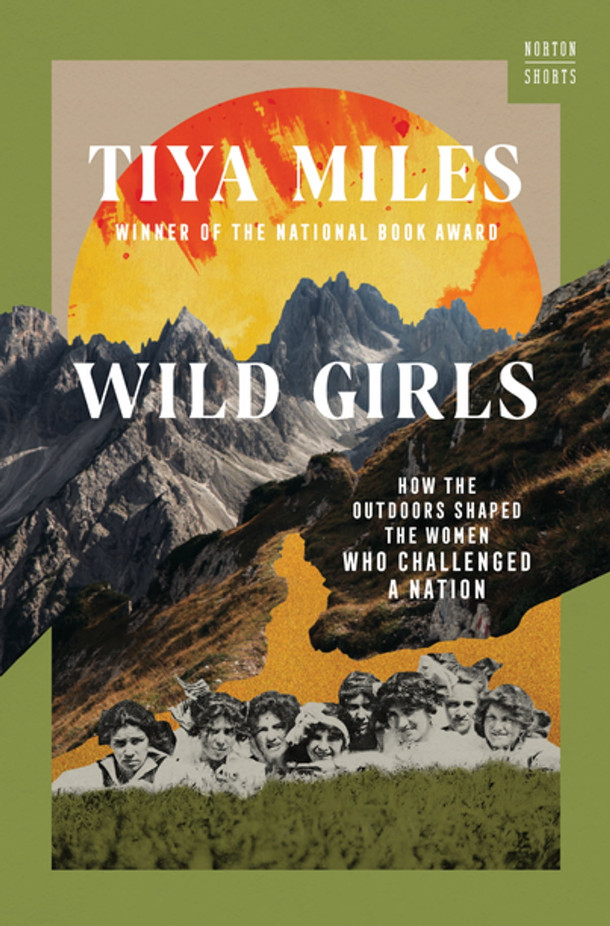
Wild Girls: How the Outdoors Shaped the Women Who Challenged A Nation (Photo: Courtesy of Tiya Miles)
To kick off Women’s History Month, we take a look at the history of women outdoors in America. From abolitionist Harriet Tubman to novelist Louisa May Alcott, some of the country’s most important women trailblazers shared a connection with the natural world in their girlhood. According to author Tiya Miles in her book Wild Girls: How the Outdoors Shaped the Women Who Challenged a Nation, this time spent in the outdoors prepared these women to become pioneers in their fields. She joins Host Paloma Beltran for more.
Transcript
DOERING: It’s Living on Earth, I’m Jenni Doering.
BELTRAN: And I’m Paloma Beltran. During the 19th century, the ability to spend time in nature helped free some girls from restrictive social norms and turned them into pioneering women. Abolitionist Harriet Tubman, novelist Louisa May Alcott, Native American writer Zitkála-Šá, and farmworkers’ champion Dolores Huerta all shared a connection to the natural world in their girlhoods. For more on these trail blazers, we turn to historian Tiya Miles. In her book Wild Girls: How the Outdoors Shaped the Women who Challenged a Nation, she reveals how playing and working outside in their youth prepared these women to lead the way towards gender equality, abolition, and more. Tiya recently joined me to share their stories and I asked her to start by reading a passage from her introduction.

Zitkála-Šá, also known as Gertrude Simmons, was a member of the Yankton Dakota tribe. After a childhood spent in the wilderness, Zitkála-Šá became an author, musician, and activist. (Photo: Gertrude Käsebier, Wikimedia Commons, Public Domain)
MILES: From the micro scale of a single tree to the macro scale of the forest, spaces in nature have been meaningful to the visionary lives of American girls. Girl outsiders became trailblazers in their communities and in American culture, writ large. Time in the outdoors ignited girls’ critical awareness, fed their self-knowledge, charged their imaginations, built their capacity for resilience, and bestowed moments of inner peace that steadied their spirits and tumultuous times. The stories pressed into this book, like wildflower petals, will show how time spent outside shape the character of girls who later changed the country.
BELTRAN: Thank you. Please talk to me about the complicated social context in which these wild girls grew up in amongst the outdoors.
MILES: Well, most of the book is describing experiences that take place in the 19th century. And this was a period of extreme restriction, constriction, oppression for many different populations of girls living on these lands. It was a period as we know, of enslavement. It was a time when boarding schools, organized and funded by the federal governments were created to compel Native American, quote, education. It was a time when girls of any class at any background were expected to know their place in a sense, when it came to gendered organizations of society. So girls were supposed to be quiet, still, pure, virtuous, and obedient really, across the board in the context of American civilization.
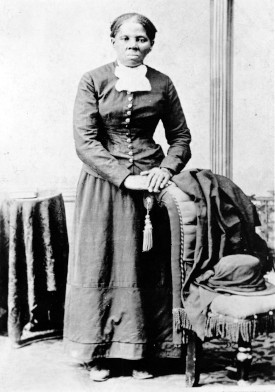
American writer, nurse, human rights activist, abolitionist, political activist and freedom fighter Harriet Tubman (Photo: Wikimedia Commons, Library of Congress, Public Domain)
BELTRAN: A moment in history that you point to is that of the Leonid Meteor shower that took place in 1833. Where thousands of meteors were seen across North America. Harriet Tubman observed that event. Can you tell us more about Harriet her story and what she witnessed that day.
MILES: Harriet Tubman was enslaved in the US South, Tubman was born in Maryland, probably in the early to mid 1820s. And she grew up in the dire-ist of circumstances. She was constantly being separated from the mother she loved, from her siblings and her father, because the man who owned her mother, and her mother's children, including Harriet Tubman, would lease them out to bring in income. So Tubman was often as a very young girl, separated from her family, alone, desperate, afraid. And as she got to become a little older and a little bolder, in part because of her experience outside, Tubman learned how to run away from the people who were leasing or renting her, and to find her mother, who was on another farm or another plantation.
BELTRAN: Tremendous bravery.
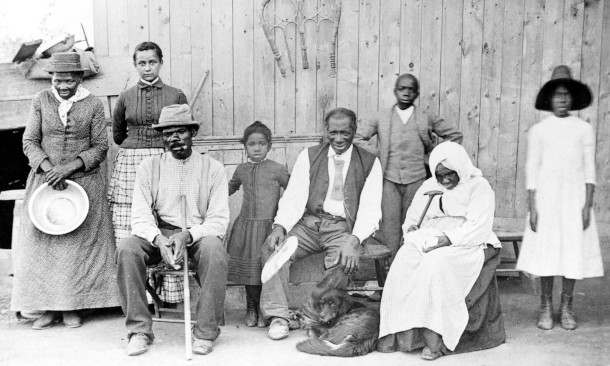
Harriet Tubman (far left) alongside members of her family and several boarders who lived in her home. (Photo: Wikimedia Commons, Public Domain)
MILES: I know, I know, it's incredible and so much courage. And one of these nights when Tubman ran away, just briefly, temporarily, to visit her mother. She was there with her brother, and they were inside the cabin where her mother lived. And her brother would stand outside at the door of the cabin, to watch for the patrollers. And these are people who would basically police the roads to look for enslaved people who might be out of their so-called rightful places without permission. And they would return these enslaved people, and they could exact terrible punishments. So Harriet Tubman as a girl, probably around the age of a tween, so a preteen was with her mother visiting and her brother was standing guard by the door, and her brother, all of a sudden shouted, "come out, come out and look at the stars". And Harriet Tubman, who at that time was known by the nickname of Minty, came outside and joined her brother. And she looked up and she saw what she later described as just an uncountable number of stars that were shooting across the sky. Harriet Tubman later said that she thought that moment could have been Judgment Day, because it was so incredible, so miraculous, to see what looked like, you know, millions or billions zillions of stars just raining down onto the earth. Well Tubman wasn't the only enslaved girl to witness this site and many other enslaved girls and boys and children saw this and remembered the story of what they often described as the night the stars fell. And in Harriet Tubman's world, and the world of enslaved girls and enslaved people, this shower seemed to carry a message. And the message was that God could possibly pass judgment on the people who are mistreating others on the earth, God could possibly pass judgment on enslavers, because God could bring the sky down in a shower of stars.
BELTRAN: How did Harriet Tubman’s experience outside help her gain the tools she needed to lead people to freedom?
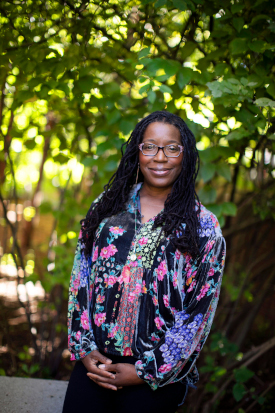
Tiya Miles is the Michael Garvey Professor of History and Radcliffe Alumnae Professor at the Radcliffe Institute for Advanced Study at Harvard University and author of Wild Girls: How the Outdoors Shaped the Women Who Challenged A Nation. (Photo: Tobi Hollander)
MILES: Spending time in nature gave Harriet Tubman psychological tools as well as the practical tools for the freedom fighter that she would become. She talked about how she was a neglected weed as a child, and these are her words. This is something that really caught my attention when I was thinking about how to interpret her life story, because it tells us that Tubman was an observer of nature. She was someone who thought nature, thought about herself through the language of nature. But it also tells us that Tubman recognized the way in which she was being mistreated as a child and she also associated herself with a kind of living thing that is incredibly tough and resilient. Tubman was a very religious woman. She believed that God was against slavery and at the same time she felt that it may have been ordained by God that she was placed outside during her teenage years to learn how to navigate the woods and learned she did. She learned about the woods, she learned how the waters flowed in the woods, she learned how to read the sky, she learned about the different animals that would be with her in the woods and when she made her escape, which would be her fine escape from slavery as a young woman she applied all of those skills. For a decade of her life following that she helped other people in the very same way, moving through those woods that she has become a companion of.
BELTRAN: And you also profiled the famous author Louisa May Alcott as one of these Wild Girls. How did Louisa's connection to nature inspire her literary work?
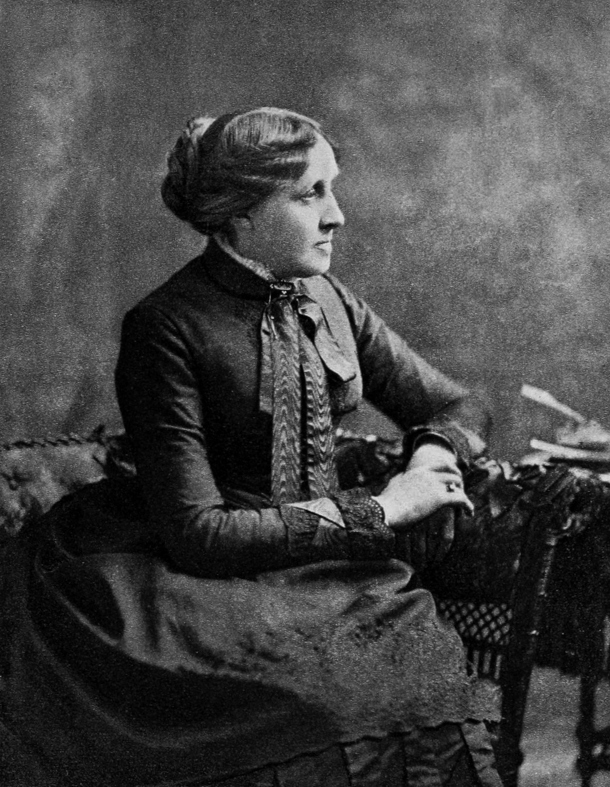
Louisa May Alcott was an American novelist, short story writer, and poet best known for writing the novel Little Women. (Photo: Wikimedia Commons, Public Domain)
MILES: Well Louisa May Alcott is a historical figure who I never really expected to research and write about Paloma. She's somebody who I read when I was a teenager, I read "Little Women" I think probably in high school or around that time and I vaguely recall enjoying the novel. But I had never thought that I would return to her. I worked on this book during the height of the COVID-19 pandemic and there was one particular weekend when my kids and I were just feeling stir crazy in the house. We needed to get out and for some reason it popped into my head "let's go to Louisa May Alcott's Orchard House". This is a historic site in Concord, Massachusetts not too far from where we live. And as I was at her home and reading about her it sort of clicked that she would've been walking these hills, she would've been planting in this garden, she would've been in a landscape where not too far away there was the very famous Walden Pond. And so I thought let me just look into this and it turns out Louisa May Alcott was a perfect figure to include in this book. I really did not know that Paloma, I had not idea the extent to which her connection to the outdoors, her sort of psychological and emotional connection, was born out of her childhood and the things she loved to do. The way she perceived herself and not just in the novel "Little Women" where we see it all over the place in the character Joe March who is a quote "tomboy". Well Louisa May Alcott was also a "tomboy" those were the words she used to describe herself and she was somebody that would say, that she didn't even want to play with a kid unless they could climb a tree, unless they liked to play with spiders the way she did. Her favorite reading spot was this old kind of wheel barrel out in the yard, she loved to go tearing across the fields. She loved to hang out with actually older men including some of the famous philosophers that we know of from Concord, Ralph Waldo Emerson, Henry David Thoreau. Louisa May Alcott I learned through my research had a really interesting way of thinking about herself. She wrote that she felt much more like a boy or a wild deer or a horse than a girl. She felt like one of these beings, these other kinds of beings who could be outside, could run outside, who could express themselves with these sort of dramatic movements all of which was supposed to be off limits for girls. I mean there's this really interesting detail that I have to slip in there…
BELTRAN: Please do!
MILES: Alcott says that when she was a girl, her mother actually tied her to the sofa to try to keep her in the house. I mean, that is, I think, the perfect symbolic image for the expectations of certain girls, especially middle class, Euro-American girls living in New England at this time. That they were supposed to be in the parlor, behaving properly, being dainty, being quiet, being pretty, being seen and not heard. But that was not who Louisa May Alcott was, she refused to be that girl. And actually, when her family moved to the country, which was Concord, her mother just seems to have given in maybe given up perhaps actually recognize and embrace the kind of kid she had. And she said Louisa May Alcott go run, and she allowed the Louisa to explore the outdoors.
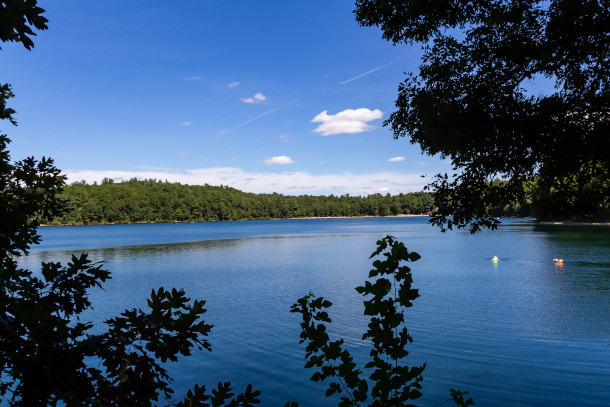
Louisa May Alcott often roamed the famous Walden Pond, a lake in Concord, Massachusetts, in the United States. (Photo by Bill Illot, Flickr, CC BY-NC-ND 2.0)
BELTRAN: Talk to me about how the multiracial spaces near Boston and Walden Pond. How did that help shape Louisa May Alcott, her writing and her spirit?
MILES: Louisa May Alcott was an unusual kid. She was an unusual girl for her family, for her society and for her time. And one time when she was doing her walkabouts, she fell into Frog Pond. And she was actually in great danger in this moment. She might have drowned. Alcott reports that it was a black boy who saved her. It was a black boy who jumped in and helped her to get out of Frog Pond. And she says from that moment, she became an abolitionist. One of the things that we see through Alcott's story and also the other stories that I tell in the book is outdoor spaces seem to make a way for people of different racial categorizations, different sex and gender categorizations, different class categorizations to come together, because they are not as heavily separated and segregated, and surveilled and policed as some of these interior spaces. So Alcott might not have come across a black boy who had that kind of freedom of movement in the town homes and country homes of her family, but the outside of the park, she did encounter him, and that encounter changed her life in more than one way. It may have actually saved her life and it certainly began a transformation in her thinking.

Louisa May Alcott’s historic orchard house. That is where Louisa wrote Little Women in 1868 and where the novel was set. (Photo: Tiya Miles)
BELTRAN: Tiya, what do you hope readers take away from your book and these stories?
MILES: I have heard form a number of readers, a number of women readers that the most meaningful thing to them about this book is that it reminded them of their girlhoods, it reminded them of who they were when they loved to be outside, when they loved to run through the woods to explore their neighborhoods. And it has reminded them that they want to be those same people. They want to embrace those girlhood adventures again. I so appreciate hearing that. And I would also hope that people take away a sense of inspiration about their own lives. I really do wish that people would see the examples in this book as models for what it is we can do to take care of the earth, top take care of these faces in nature and also to ensure that people have equal access to them.
BELTRAN: Tiya Miles is a Professor of History at Harvard and author of “Wild Girls: How The Outdoors Shaped the Woman who Challenged the Nation”. Tiya thank you for joining us.
MILES: I enjoyed it so much. Thanks, Paloma.
Links
Literary Hub | “How America’s Natural Beauty Called Generations of Women to Action”
Living on Earth wants to hear from you!
Living on Earth
62 Calef Highway, Suite 212
Lee, NH 03861
Telephone: 617-287-4121
E-mail: comments@loe.org
Newsletter [Click here]
Donate to Living on Earth!
Living on Earth is an independent media program and relies entirely on contributions from listeners and institutions supporting public service. Please donate now to preserve an independent environmental voice.
NewsletterLiving on Earth offers a weekly delivery of the show's rundown to your mailbox. Sign up for our newsletter today!
 Sailors For The Sea: Be the change you want to sea.
Sailors For The Sea: Be the change you want to sea.
 The Grantham Foundation for the Protection of the Environment: Committed to protecting and improving the health of the global environment.
The Grantham Foundation for the Protection of the Environment: Committed to protecting and improving the health of the global environment.
 Contribute to Living on Earth and receive, as our gift to you, an archival print of one of Mark Seth Lender's extraordinary wildlife photographs. Follow the link to see Mark's current collection of photographs.
Contribute to Living on Earth and receive, as our gift to you, an archival print of one of Mark Seth Lender's extraordinary wildlife photographs. Follow the link to see Mark's current collection of photographs.
 Buy a signed copy of Mark Seth Lender's book Smeagull the Seagull & support Living on Earth
Buy a signed copy of Mark Seth Lender's book Smeagull the Seagull & support Living on Earth

